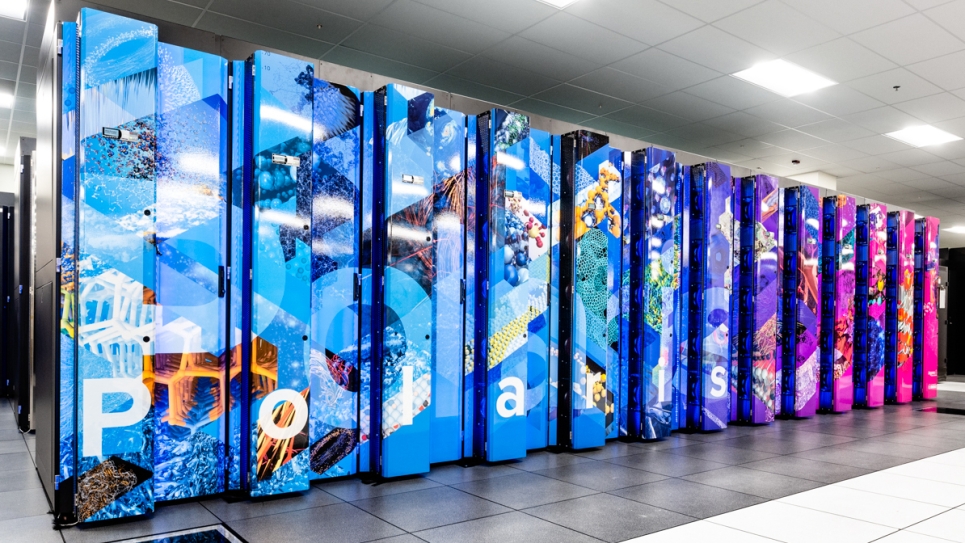
Polaris provides researchers with a powerful testbed to prepare applications and workloads for science in the exascale era. (Image: Argonne National Laboratory)
Polaris provides researchers and developers with a powerful new platform to prepare applications and workloads for science in the exascale era.
Developed in collaboration with Hewlett Packard Enterprise (HPE), Polaris is a leading-edge system that will give scientists and application developers a platform to test and optimize codes for Aurora, Argonne's upcoming Intel-HPE exascale supercomputer.
The Polaris software environment is equipped with the HPE Cray programming environment, HPE Performance Cluster Manager (HPCM) system software, and the ability to test programming models, such as OpenMP and SYCL, that will be available on Aurora and the next-generation of DOE’s high performance computing systems. Polaris users will also benefit from NVIDIA’s HPC software development kit, a suite of compilers, libraries, and tools for GPU code development.
For system details, visit the Polaris user guide.

Polaris and Aurora will have many similarities at the system and user level.